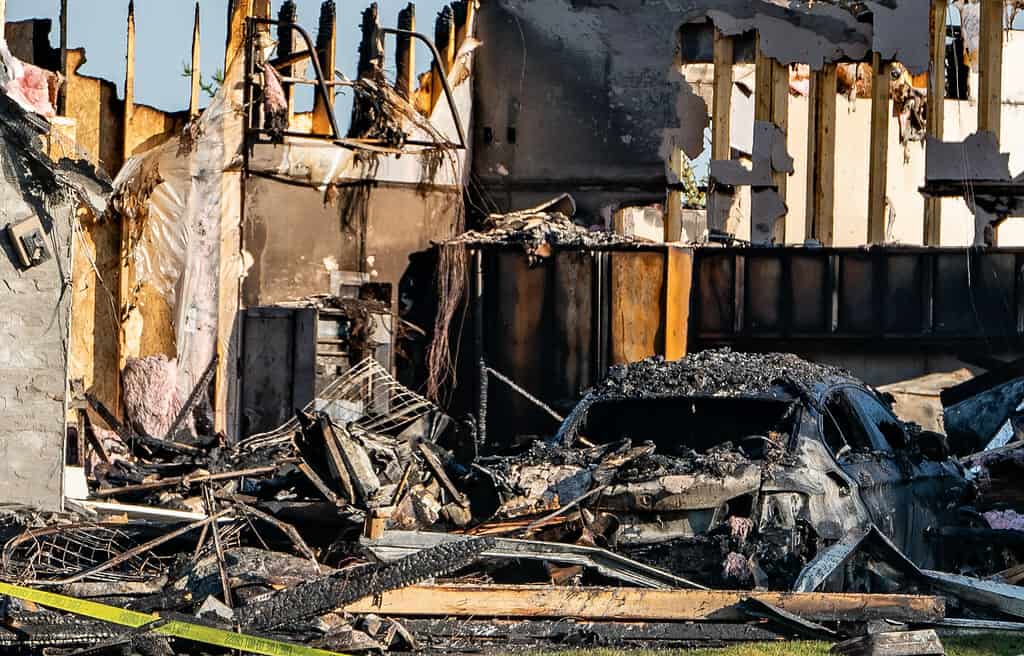The goal of buying home insurance is so that your policy helps you rebuild if anything happens to your home. It replaces anything from high-end appliances to your smart gadgets and your favorite rocking chair. Insurance replaces these items if they get damaged. But as you shop for home insurance, one of the terms you will come across is home insurance replacement cost. What is it, and how does it affect your coverage? Let us break this down for you and how it affects your policy.
What Is Home Replacement Cost?
Home replacement cost is the amount it takes to rebuild your home from scratch. This happens due to damages from fire, weather, or other perils. You will not pay even a single cent out of pocket as long as the replacement costs are within your policy limits. For example, if your home gets destroyed by lightning, the insurance company will compensate you for the amount for rebuilding your home to how it was before. This involves using the same materials or those of similar quality. When buying home insurance, in most cases, replacement cost insurance is the default option. But if you are not sure, check in with your insurance company to find out which coverage you have.

What Are the Benefits and Risks of Insuring Your Home at Replacement Cost?
Benefits
The major benefit of home insurance replacement costs is that if your home is destroyed, there will be a little financial interruption. Your insurer will cover the cost of rebuilding your home, saving you from out-of-pocket expenses. You will not have to worry about market changes even when the value of your home goes down.
It is also a reliable option. When you picture the amount of money you will need to rebuild your home if anything happens, the replacement cost offers a reliable solution that saves you money.
Risks
Rebuilding your home can cost different prices at different times! That means you have no guarantees you will manage to rebuild your house at the estimated replacement cost. Continue reviewing your policy to ensure that you are still adequately protected from risks. Ideally, you should review your home insurance policy annually.
How Is Replacement Cost Calculated?
Your insurance company will calculate the replacement costs of your home by using the amount it will cost to rebuild your home with the same materials. Several factors can determine the replacement cost of your home, such as:
- The size of your home
- Age: older homes tend to have certain features that are difficult to replace or repair
- Your home’s finishes or features
- Fixtures, flooring, cabinets, and appliances
- Exterior features like roof, siding, and windows
- Renovations: Inform your insurance of any upgrades to make sure your replacement value adjusts accordingly.
- Furniture and other valuables

How to Determine Your Home’s Replacement Cost
There are several ways you can determine your home’s replacement value. Here is a breakdown of each method.
Insurer Appraisal
Home insurance companies have their ways of calculating the replacement cost. They use software that will help generate the home replacement value based on factors such as your home address. But while this method is the easiest, it is usually not as accurate as an in-person appraisal. When shopping for home insurance, compare estimates from various insurers before committing to a replacement cost.
Hire a Licensed Appraiser
While this can be a costly option, it is also the one that will give you the most accurate results. A professional appraiser collects data in person, which is why you can expect to get accurate results. They are thorough and pay attention even to the smallest of details. But in exchange for that, you will pay a certain fee. The good thing is that at the end of the day, you get a professional opinion about the replacement cost of your house.
Online Replacement Cost Calculator
Go online, and you will find multiple home insurance replacement cost calculators that can help. Some of these calculators are free, and others charge a subscription fee. The tools factor in the same elements that an insurance company does when determining the replacement cost. This includes factors like the age of your home, square footage, type of roof, foundation, etc. However, these calculators are not always accurate. That is why you should not rely on just one.
Do the Math Yourself
Another alternative that requires you to invest your time is estimating the replacement cost yourself. Note that this method is risky because you could get the wrong estimate than if you worked with a professional. When doing the calculations by yourself, you will need to calculate the square footage of your home, then multiply it by the local construction costs per square footage. You will also need to factor in certain things, such as your siding materials, fixtures, flooring, and roof. This process means reaching out to vendors such as flooring companies to get an estimate on the cost of these things. We do not suggest using this method because the risk of making mistakes is high.

What Is the Difference Between Actual Cash Value and Replacement Cost?
If disaster strikes and you file a home insurance claim, the insurer will compensate you a certain amount. Your coverage limit will determine how much you are reimbursed. But the amount will also be based on whether you have actual cash value or replacement cost value coverage. Most people often confuse the two, yet they are different.
The actual cash value (ACV) will cover the cost of replacing or repairing your home minus depreciation. On the other hand, replacement cost value (RCV) factors into the cost of replacing or repairing an item using today’s prices. In ACV, you will pay a lower premium but also receive less cash if you file a claim.
Which Is Better Between ACV and RCV?
The replacement cost value is better coverage than the actual cost value. That is because you are likely to be reimbursed more even if your items have depreciated. In actual cash value coverage, you will pay more out of pocket because the insurer subtracts the depreciation value. If you can afford to buy RCV, get it for better coverage.
Updating Your Home’s Replacement Cost Value
We recommend you review your home insurance policy once every year. This ensures that you have adequate coverage for your home. If you think you are underinsured, talk to the insurer about updating the home insurance replacement cost for your home. Also, if you do any home upgrades, inform your insurer because home upgrades tend to affect home replacement cost value.
Does the Replacement Cost Amount Affect Your Premiums?
A higher replacement value means higher premiums, and a lower replacement value means lower premiums. If it costs more to rebuild your home from scratch, you will have to pay more in premiums. That is because when you submit your claim, your insurer will not factor in the depreciation cost. Whatever your home costs today in terms of rebuilding, it is what the insurer will pay.
When Is Replacement Cost Utilized?
RCV should be used when you want to return your home to its original condition before being exposed to risk. This is particularly important in older homes. The fixtures or things around your home may be harder to find than before. Plus, considering that RCV depends on current market conditions, it will be easy to get back to where you were financially.
Levels of Replacement Cost Coverage
There are certain circumstances where your basic replacement cost coverage may not be enough. This is often seen in regions where disasters happen often, and repair costs are likely to fluctuate. Rebuilding costs can increase for various reasons. For instance, if your entire area experienced a tornado and all homes have to be rebuilt, construction is likely to be more costly. This is because of the laws of supply and demand, where demand is more than supply.
In such instances, there are forms or replacement coverage you can consider, such as:
- Extended home insurance replacement cost coverage: This coverage will pay to rebuild your home to its original condition even if the loss is greater than your coverage limit. However, it is only to a certain amount. In most instances, it is an additional 25 to 50 percent of your coverage limit.
- Guaranteed replacement cost coverage: This coverage has no capped amount. It will pay for the rebuilding of your home despite the rebuilding costs. So, even if your coverage limit was $500,000 but rebuilding your home to its original condition is now at 2 million dollars, the extra cost will still be covered.



